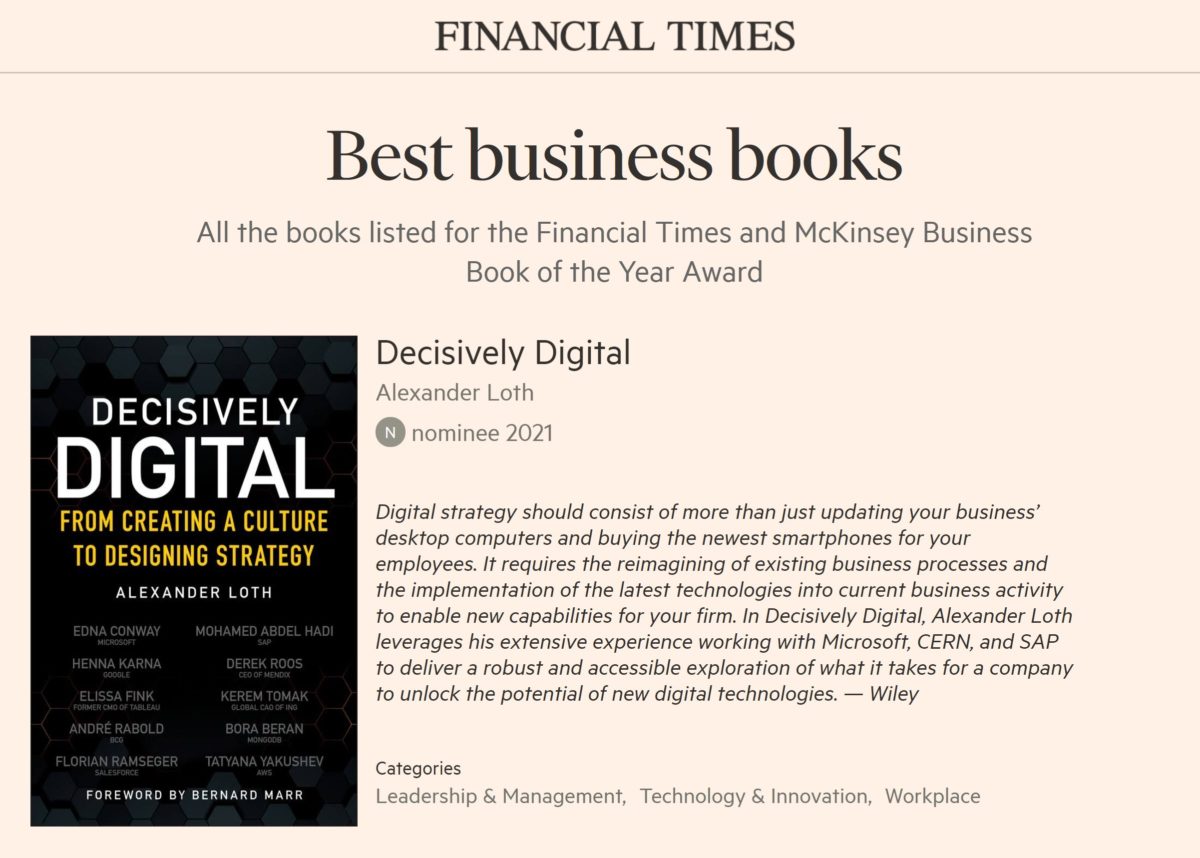Tag: Digital Transformation
-
Join the #bookaweekchallenge for a Chance to win a copy of Decisively Digital
My book Decisively Digital: From Creating a Culture to Designing Strategy (➡️Amazon) is guest at Christina Stathopoulos and her #bookaweekchallenge on LinkedIn. Join Christina as she reflects on her journey through the book with several LinkedIn posts. Christina’s posts can be found further down this blog along with a variety of interesting comments and opinions.…
-

Decisively Digital is nominated for the Financial Times and McKinsey Business Book of the Year Award 2021
The publisher of Decisively Digital, Wiley, has informed me that our book is now officially nominated for the prestigious Financial Times and McKinsey Business Book of the Year Award 2021. The nomination itself is a very big achievement. Let’s keep our fingers crossed that we win this award! Thank you, everyone, for making this possible…
-

Decisively Digital is the #1 New Release in Organizational Change on Amazon
Our book Decisively Digital is the number 1 new release in Organizational Change on Amazon! The paperback of Decisively Digital became available yesterday in the US, with other territories soon to follow. Decisively Digital companion website Announcement on LinkedIn Amazon product page It took a village to finish this book. Many thanks to all of you:
